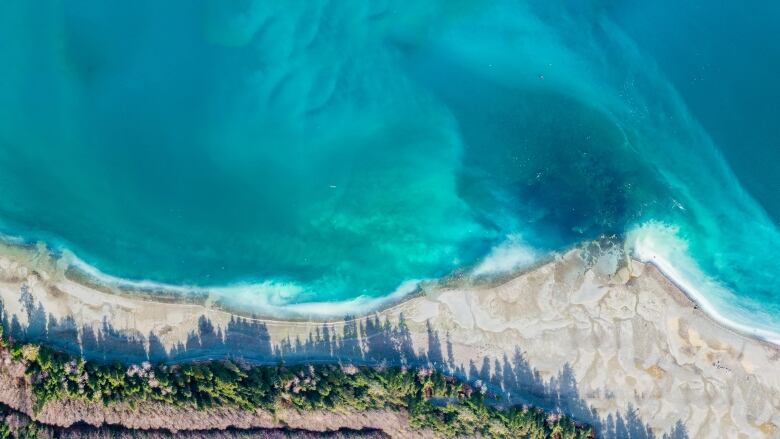Herring spawn off northern Vancouver Island dazzles residents and animals alike
Spawn is a 'front row seat to the importance of herring' says Port McNeill resident

Just off the coast of northern Vancouver Island, the ocean waters have turned a vibrant shade of turquoise as herring spawn in an area where they've never been recorded before.
Port McNeill resident Jackie Hildering, who works with the Marine Education and Research Society, says the spawn has given her and her neighbours a "front-row seat to the importance of herring."
"We can hear the barking of California sea lions, that growling of steller sea lions. There is a cacophony coming from the birds, from gulls to diving birds to the eagles that are swooping down," she told All Points West host Jason D'Souza.

The spawn is happening off the coast of Port McNeill and Hyde Creek, an area where Department of Fisheries and Oceans biologist Jaclyn Cleary says a herring spawn has never been recorded.
"It doesn't mean that there has never been a spawn there before," she said, adding that DFO's records date back to 1950.
The water's colour comes from the milt of the male herring that is, to put it in human terms, its sperm.

Hildering, a diver and underwater photographer, studies humpback whales, which typically feed on juvenile herring, she said.
"I've never seen adult herring in these amounts before in this area."
After speaking with First Nations, researchers and longtime residents, she hasn't been able to find anyone else in the area who can remember a spawn like this.

According to the Hornby Island Conservancy, about 280 kilometres southeast of Port McNeill, Pacific herring is one of the most important fish in B.C. waters, as sea birds, mammals and other fish feed on them.
The conservancy says they are critical tothe diet of chinook salmon, which are an important food source for southern resident killer whales.
Typically, herring spawn between Parksville and Comoxoff Vancouver Island's east coast, and around Hornby and Denmanislands, the conservancy says.
The herring spawn typically happens in waves in different areas along Vancouver Island's east coast during the spring, according to theDFO. Spawning activity at each individual site lasts two to four days.

Hildering said she and other residents are keen to watch the development of the fish, from eggs on eelgrass until they hatch. She's also hopeful they may return to the area in future years.
To see actual water change colour, to know there's this phenomenon going on and that we get to see the food web like magnified at our doorstep most of us right now are just absolutely in awe of this spectacle that we're so lucky to have happening in front of our community."
With files from All Points West












_(720p).jpg)


 OFFICIAL HD MUSIC VIDEO.jpg)
.jpg)



























































































